 To enhance service speed and avoid tariff delays, we've opened a US warehouse. All US orders ship directly from our US facility.
To enhance service speed and avoid tariff delays, we've opened a US warehouse. All US orders ship directly from our US facility.
| Cat. No. | Product Name | Field of Application | Chemical Structure |
|---|---|---|---|
| DC67525 | Hopewell Lipid 649 Featured |
L649 is a next-generation, lung-targeting ionizable lipid specifically designed for systemic mRNA delivery developed by Hopewell. Belonging to the novel "N-series" lipid class, it features a unique structure with an amine-containing head group and hydrophobic tails incorporating amide bonds. This design enables L649 to form highly stable lipid nanoparticles (LNPs) that exhibit exceptional tropism for the lower respiratory tract (lungs, bronchi, trachea) following intravenous administration. It demonstrates superior efficiency in delivering therapeutic payloads (like mRNA) specifically to key lung cell types, including alveolar epithelial cells (AT1 and AT2) and bronchial cells, while minimizing off-target accumulation in organs like the liver. L649-based LNPs, particularly when formulated with helper lipids like POPE, combine high potency with significantly improved tolerability, allowing for effective dosing in vivo. This makes L649 a promising candidate for developing treatments for various lung diseases such as pulmonary fibrosis, COPD, lung cancer, and infectious diseases like COVID-19.
More description
|

|
| DC67315 | Lipid AA15 |
The AA15 lipid, an amino acid-derived ionizable lipid, integrates a carboxylic acid-containing headgroup and biodegradable branched ester tails (R2) to enhance mRNA delivery. Optimized as AA15V LNP, it exhibits a hydrodynamic diameter of 102.3 ± 4.1 nm, low polydispersity (PDI <0.15), and slightly positive zeta potential (+4–6 mV), enabling efficient tumor-targeted delivery. With a pKa ~6.1–6.4, AA15V ensures protonation in acidic endosomes, promoting mRNA release. It achieves >85% mRNA encapsulation efficiency, critical for stable saRNA delivery. In vitro, AA15V LNP-sSE-SCTs induced sustained SE-SCT expression (69% H-2Kb+β2m+ B16F10 cells at 72 h), outperforming mRNA formulations. In vivo, a single intratumoral dose of AA15V LNP-sSE-SCTs suppressed tumor growth by 22-fold in vaccinated mice, synergizing with checkpoint inhibitors (anti-PD-1/CTLA-4) for complete regression in 28.6% of lymphoma models. Ex vivo, AA15V enabled SE-SCT expression in human glioblastoma (7.1% CD45− cells) and lung cancer samples (5.8–8.7%), underscoring clinical potential. Key data: pKa ~6.3; encapsulation: 85–89%; zeta: +4–6 mV; size: 102.3 ± 4.1 nm.
More description
|
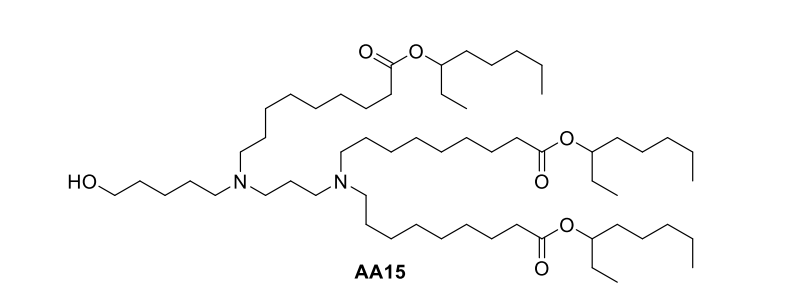
|
| DCC4533 | Ryl-634 Featured |
Novel potent broad-spectrum antiviral inhibitor, showing excellent broad-spectrum inhibition activity against various pathogenic viruses, including hepatitis c virus (HCV), dengue virus (DENV), zika virus (ZIKV), Chikungunya virus (CHIKV), enterovirus 71
More description
|
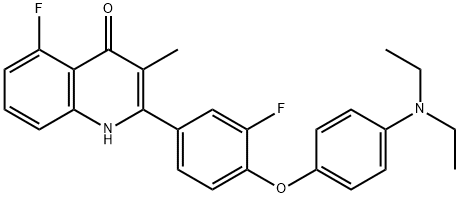
|
| DC67450 | A28-C6B2 |
A28-C6B2 is an ionizable lipid (pKa 6.43) designed for mRNA encapsulation in lipid nanoparticles (LNPs). Following intravenous injection in mice, these LNPs exhibit spleen-selective accumulation, particularly localizing in F4/80+ macrophages and CD11c+ dendritic cells, with moderate uptake by T lymphocytes.
More description
|

|
| DC60828 | YK-TLR-001 Featured |
YK-TLR-001 is a cyclic acetal-based ionizable lipid for mRNA delivery. YK-TLR-001 LNPs are demonstrated to enhance mRNA expression in the spleens and to induce exceptional maturation of antigen-presenting cells (APCs) and to promote antigen presentation.
More description
|

|
| DC67568 | ORNA Lipid AX-6 Featured |
AX6 is an ionizable lipid in the F32 LNP formulation, engineered by ReNAgade/Orna Therapeutics for targeted mRNA delivery to T cells. AX-6's unique bridged bicyclic/polycyclic core with a tertiary amine group enables pH-dependent protonation and endosomal escape, while C14-C18 hydrophobic tails (optionally branched/fluorinated) enhance bilayer stability and mRNA encapsulation. Demonstrating exceptional T-cell tropism, AX6 achieves high transfection efficiency in CD4+/CD8+ T cells (validated in NHP/humanized models) with minimal toxicity. Compared to clinical benchmarks (SM-102, ALC-0315), its rigid core offers superior serum stability and immune-cell specificity, positioning it as an ideal candidate for CAR-T/NK therapies and next-gen vaccines. The F32 LNP system's proven efficacy (e.g., in vivo B-cell depletion) underscores AX 6's transformative potential for cell engineering and immunotherapies.
More description
|
|
| DC67601 | Sanofi Lipid 15 Featured |
Sanofi Lipid 15 is a highly efficient ionizable cationic lipid for T-cell transfection. Its unique structure enables superior mRNA delivery to T cells, with key features including: 1) pH-responsive ionization (pKa ~6.5-7.2) for optimal endosomal escape, 2) biodegradable ester linkages for reduced toxicity, and 3) optimized hydrophobic tails for membrane fusion. When formulated in LNPs with CD3/CD8-targeting antibodies, Lipid 15 achieves >50% transfection efficiency in primary human T cells, with 2-3× higher GFP expression than DLin-KC3-DMA controls. The LNPs maintain stable particle size (~100nm) after freeze-thaw cycles and show minimal off-target effects (<5% non-T cell transfection). This performance makes Lipid 15 ideal for CAR-T and TCR engineering applications.
More description
|

|
| DC66294 | DSPE-PEG-NBD(PEG2000) Featured |
DSPE-PEG-NBD is a fluorescent phospholipid PEG conjugate, which can be used as a lipid membrane probe. The excitation/emission wavelength of NBD is 460 nm/534 nm.
More description
|

|
| DC66199 | DMPE-PEG-NBD (PEG2000) Featured |
DMPE-PEG, a synthetic lipid, possesses unique properties and finds extensive applications as liposomes. Firstly, DMPE-PEG exhibits excellent biocompatibility and solubility, allowing for its stable presence and efficient absorption and metabolism in vivo. Additionally, DMPE-PEG possesses good surface activity, aiding in the stabilization of liposome structures and enhancing their stability.
More description
|
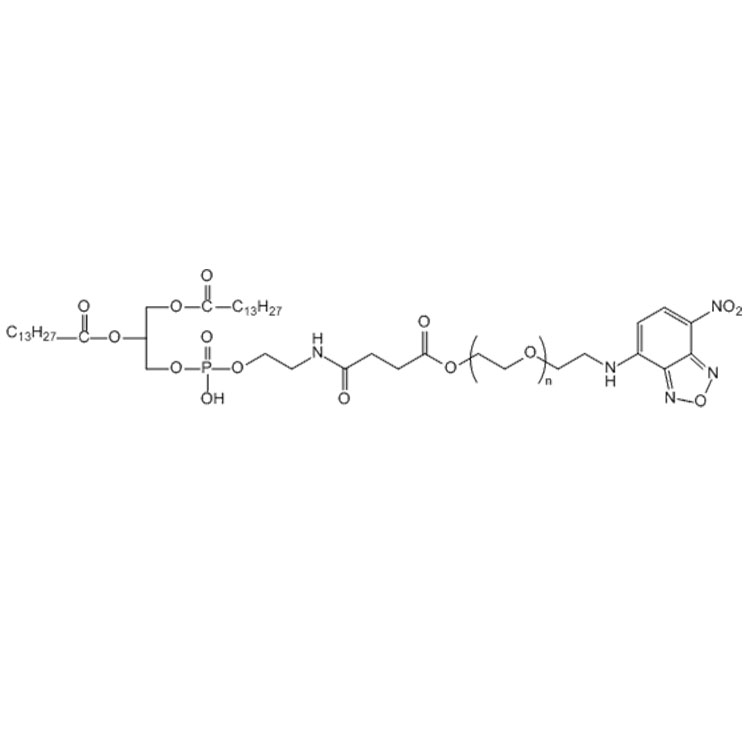
|
| DC60871 | SKLB-Y13 Featured |
SKLB-Y13 is a selective YTHDF1 inhibitor targeting the YTHDF1 m6A-binding pocket with IC50 of 0.76 µM. SKLB-Y13 disrupts YTHDF1-PRPF6 mRNA interaction in an m6A-dependent manner, thereby impairing the translation of PRPF6 and inhibiting BC proliferation while promoting apoptosis.
More description
|
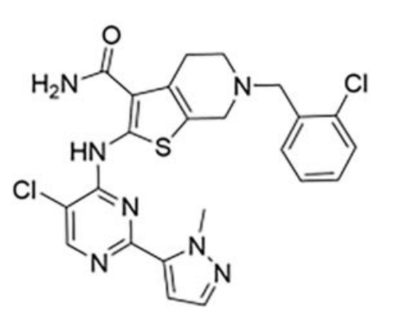
|
| DC60870 | BRD1732 Featured |
BRD1732 is a stereospecific cytotoxin dependent on the E3 ligases RNF19A and RNF19B. BRD1732 is directly ubiquitinated in cells, resulting in dramatic accumulation of inactive ubiquitin monomers and polyubiquitin chains.
More description
|
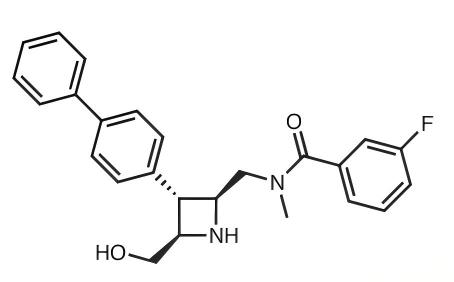
|
| DC65981 | SXC2023 Featured |
SXC2023 is an inhibitor for solute carrier family 7 member 11 (SLC7A11). SXC2023 exhibits antitumor efficacy, and ameliorates central nervous system disorder through downregulation of glutamate export.
More description
|
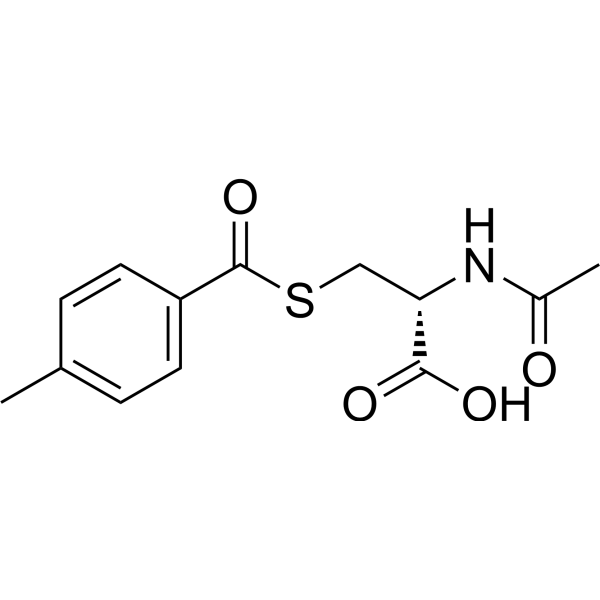
|
| DC23001 | Hypocrellin B Featured |
Hypocrellin B is an apoptosis inducer. The hypocrellins are pigments isolated from the fungi Hypocrella bambusae and Shiraia bambusicola. They are used as photosensitizers for photodynamic therapy of cancer.
More description
|
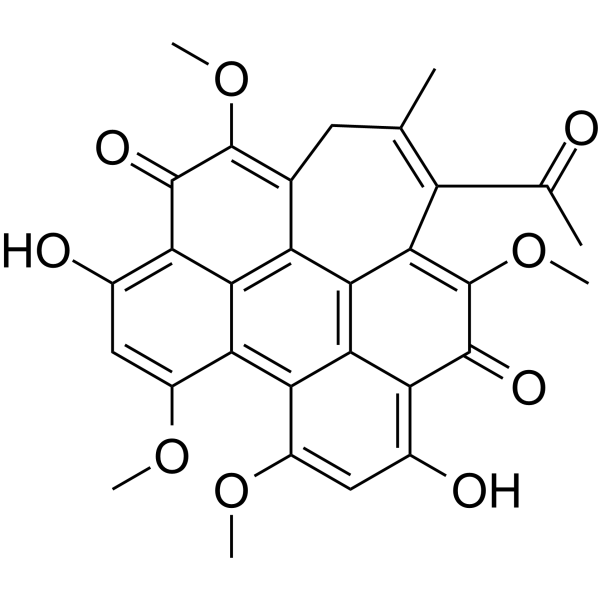
|
| DC73171 | ISM042-2-048 Featured |
ISM042-2-048 is a potent, selective inhibitor of cyclin-dependent kinase 20 (CDK20, cell cycle-related kinase/CCRK) with IC50 of 33.4 nM (CDK20/CycT1), Kd value of 566 nM.
More description
|

|
| DC73598 | IPPQ Featured |
IPPQ is a small molecule that selectively target the interface between the N-type calcium (CaV2.2) channel and CaVβ, specifically binds to CaVβ2a and inhibits CaVβ2's interaction with CaV.2-AID (alpha interacting domain).
More description
|

|
| DC48542 | LM10 Featured |
LM10 is a potent inhibitor of tryptophan 2,3-dioxygenase (TDO). Tryptophan 2,3-dioxygenase (TDO) is an unrelated hepatic enzyme that also degrades tryptophan along the kynurenine pathway. LM10 has the potential for the research of cancer diseases.
More description
|
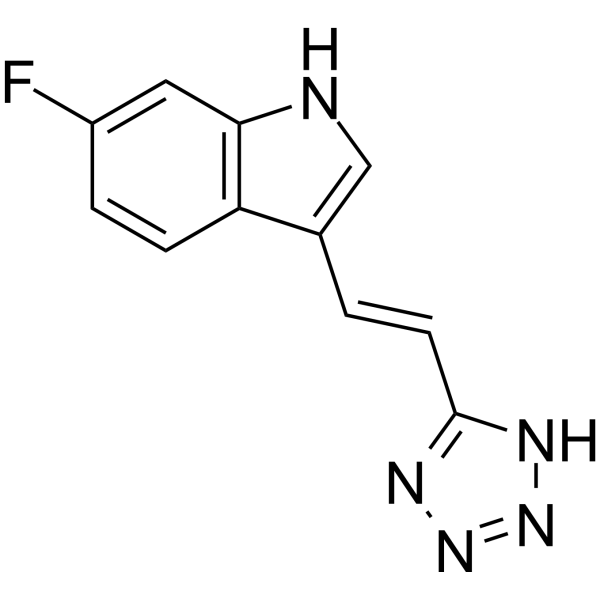
|
| DC73706 | ER-001135935 Featured |
ER-001135935 is a potent selective inhibitor of aldehyde dehydrogenase family 1 member A3 (ALDH1A3) with IC50 of 64 nM, Ki value of 106 nM.
More description
|

|
| DC24099 | CC-115 hydrochloride Featured |
A novel dual inhibitor of mTOR and DNA-PK with IC50 of 21 nM and 13 nM, respectively.
More description
|
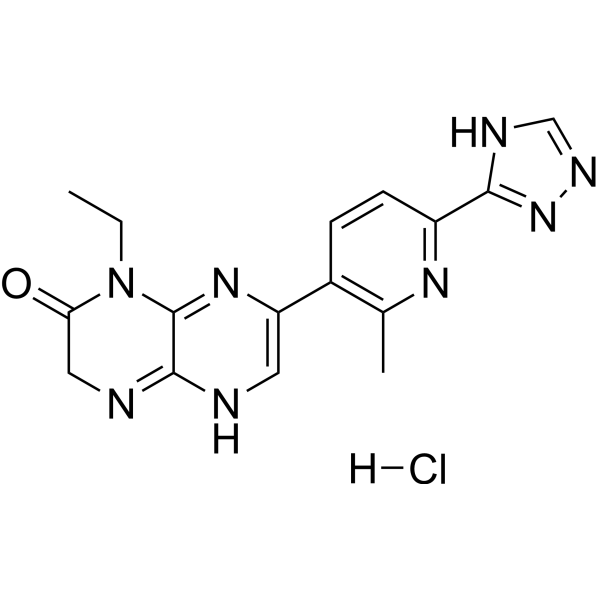
|
| DC76817 | HZS60 Featured |
HZS60 is a NMDAR/TRPM4 inhibitor with brain permeability that can improve cerebral ischemia. HZS60 has significant neuroprotective effects on primary neuronal ischemic damage caused by NMDA and oxygen-glucose deprivation/reoxygenation. HZS60 exhibits good pharmacokinetic characteristics and can inhibit cerebral ischemia-reperfusion injury. HZS60 can be used as a potential inhibitor of ischemic stroke.
More description
|

|
| DCH-009 | Quercetin Featured |
Quercetin, a natural flavonoid, is a stimulator of recombinant SIRT1 and also a PI3K inhibitor with IC50 of 2.4 μM, 3.0 μM and 5.4 μM for PI3K γ, PI3K δ and PI3K β, respectively.
More description
|
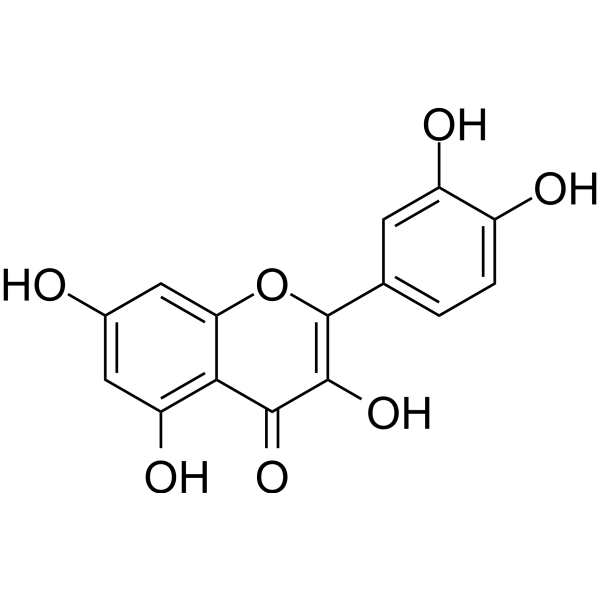
|
| DC67600 | 6,6'-((3,5-di-tert-butyl-4-hydroxyphenyl)methylene)bis(benzo[d][1,3]dioxol-5-ol) Featured |
methylene)bis(benzo[d][1,3]dioxol-5-ol).png)
|
|
| DC60209 | NSC 31152 Featured |
NSC 31152 is an antimicrobial agent, with MIC values of 18.7-21.0 µg/mL for S. aureus, S. epidermidis, E. coli, P. aeruginosa, A. niger, and A. fumigatus.
More description
|

|
| DC46417 | TGFβRI-IN-3 Featured |
TGFβRI-IN-3 inhibits TGFβR1 at an IC50 of 0.79 nM with 2000-fold selectivity against MAP4K4. TGFβRI-IN-3 represents a highly selective TGFβR1 inhibitor that has potential applications in immuno-oncology.
More description
|
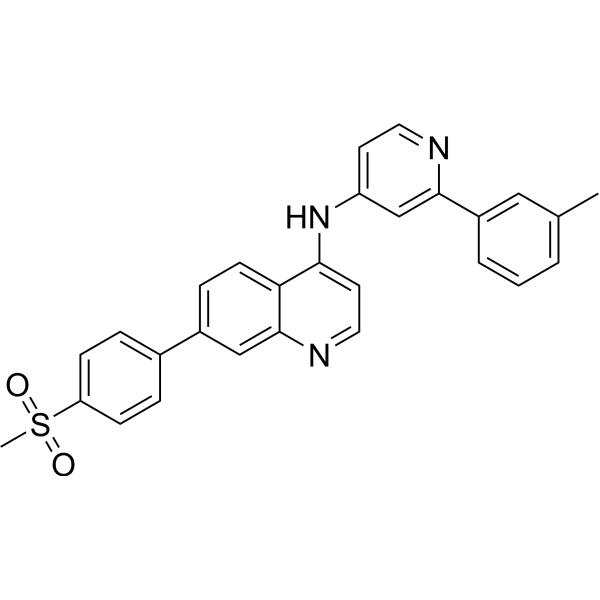
|
| DC67599 | Desmethylcarfentanil acid Featured |

|
|
| DC11555 | GNE-6776 Featured |
GNE-6776 is a novel potent, specific, non-covalent, orally bioavailable USP7 inhibitor with IC50 of 1.34 uM .
More description
|

|
| DC67598 | CYM 5442 hydrochloride Featured |
CYM5442 hydrochloride is a potent, highly-selective and orally active sphingosine 1-phosphate (S1P1) receptor agonist with an EC50 of 1.35 nM. CYM5442 hydrochloride is inactive against S1P2, S1P3, S1P4, and S1P5. CYM5442 hydrochloride activates S1P1-dependent p42/p44-MAPK phosphorylation. CYM5442 exerts retinal neuroprotection. CYM5442 hydrochloride can easily penetrate the central nervous system (CNS).
More description
|
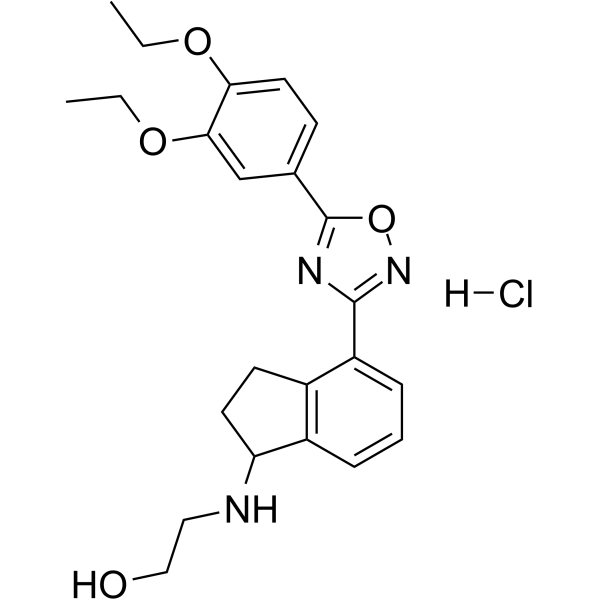
|
| DC67590 | N,N'-Bis(6-(trifluoromethoxy)benzo[d]thiazol-2-yl)methanediamine Featured |
benzo[d]thiazol-2-yl)methanediamine.png)
|
|
| DC67597 | FLT3 ligand-2 Featured |
FLT3 ligand-2 is a Ligand for Target Protein for PROTAC. FLT3 ligand-2 can be used to synthesize PROTAC FLT-3 degrader 1 .
More description
|

|
| DC67596 | DASPEI Featured |
DASPEI is a cationic styrenyl mitochondrial dye with large Stokes shift. DASPEI has excitation and emission wavelength at 550/573 nm, which has good light chromogenic property. DASPEI can stain mitochondria in living cells with good labeling property. And DASPEI can also be used to stain presynaptic nerve endings independently of neuronal activity.
More description
|
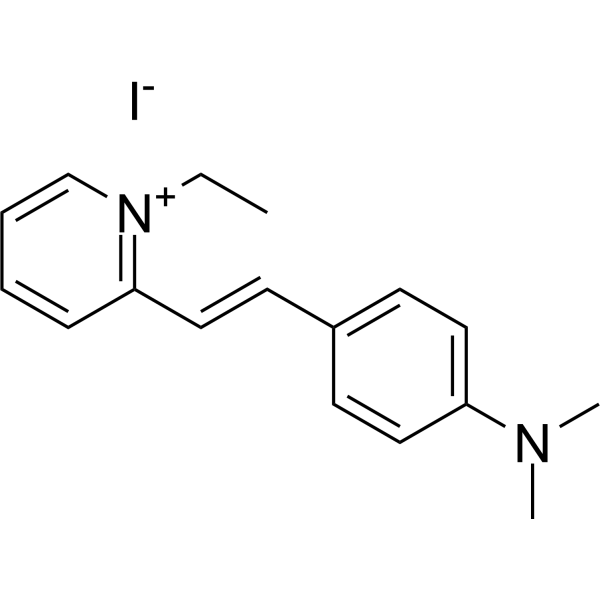
|
| DC67595 | (E)-2-((1-methyl-1H-pyrrol-2-yl)methylene)hydrazine-1-carbothioamide Featured |
-2-((1-methyl-1H-pyrrol-2-yl)methylene)hydrazine-1-carbothioamide.gif)
|